India is famous for its rich bird life, but sadly, many birds are in danger. We’re looking into the top 10 endangered birds in India. The big question is: How can we protect these amazing birds and keep our ecosystems healthy?
This article will show the challenges these rare birds face. We’ll talk about why they’re endangered and what we can do to help. From the Great Indian Bustard to the Indian Vulture, we’ll cover it all.

Key Takeaways
- India is home to a diverse array of endangered bird species, facing various threats to their survival.
- The alarming rate of bird population decline underscores the urgent need for comprehensive conservation efforts.
- Preserving the rare avian biodiversity of the Himalayas and safeguarding critical migratory bird flyways are crucial for maintaining ecological balance.
- Community-based conservation initiatives and strategies to combat habitat loss are vital for the long-term preservation of India’s threatened avifauna.
- The Indian Ornithological Red List serves as a call to action, highlighting the species in need of immediate protection and conservation measures.
Introduction to Endangered Avian Species in India
India is home to a wide variety of birds, but many are in danger of disappearing. Species like the Great Indian Bustard and the Indian Vulture are at risk. The threats to indian bird conservation and rare avian biodiversity are serious. It’s important to understand why and how to protect our threatened avifauna.
Discussing the Alarming Rate of Bird Population Decline
Studies show that many bird species in India are declining in number. Habitat loss, pollution, hunting, and human activities are to blame. The loss of places like wetlands and grasslands has hit many birds hard, pushing them towards extinction.
Highlighting the Importance of Avian Conservation Efforts
- Birds are key to keeping our ecosystems balanced. They help with pollination, seed dispersal, and controlling pests.
- When bird populations drop, it can harm the entire ecosystem. This can lead to bigger environmental problems.
- Protecting endangered birds is a moral duty and vital for our planet’s health and strength.
| Endangered Bird Species | Estimated Population | Conservation Status |
|---|---|---|
| Great Indian Bustard | 150-200 | Critically Endangered |
| Indian Vulture | 19,000-20,000 | Critically Endangered |
| Bengal Florican | 800-1,000 | Critically Endangered |
Keeping India’s rare avian biodiversity safe is crucial for our environment and our pride. By using strong indian bird conservation plans and spreading awareness, we can help these amazing birds recover.
“The fate of our birds is a barometer of the health of our environment. If we fail to protect them, we fail to protect ourselves.”
Top 10 Endangered Birds in India
In India, the world of birds is facing a big challenge. The top 10 endangered bird species are struggling to survive. Their numbers are going down fast because of many threats. We need to understand their problems to help them and keep their heritage alive.
The Indian Ornithological Red List says these 10 birds are in big trouble. From the big Great Indian Bustard to the hidden Himalayan Quail, each bird is important to India’s nature. We need to act fast to save them.
Great Indian Bustard
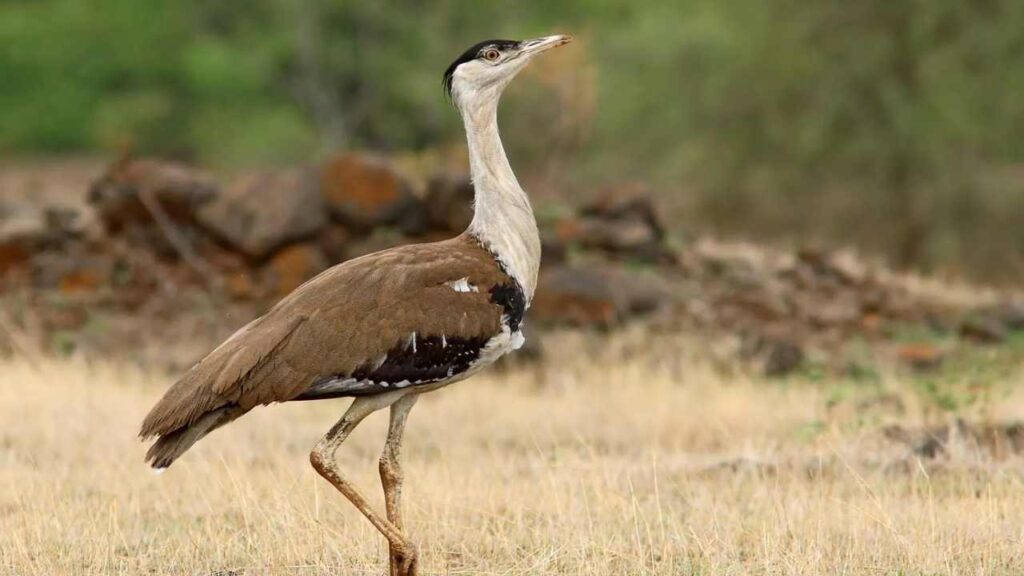
Himalayan Quail

Jerdon’s Courser
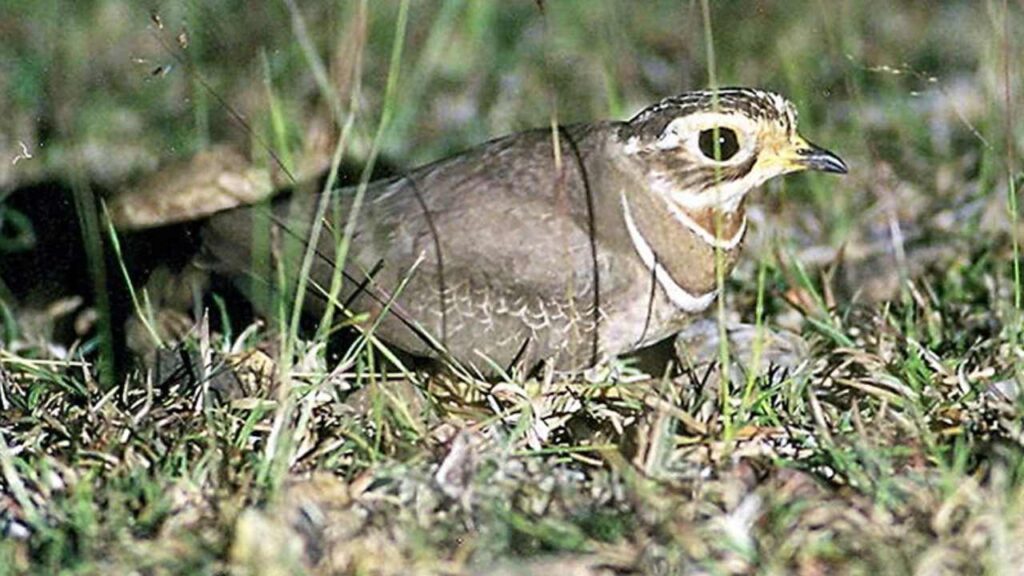
Spoon-billed Sandpiper
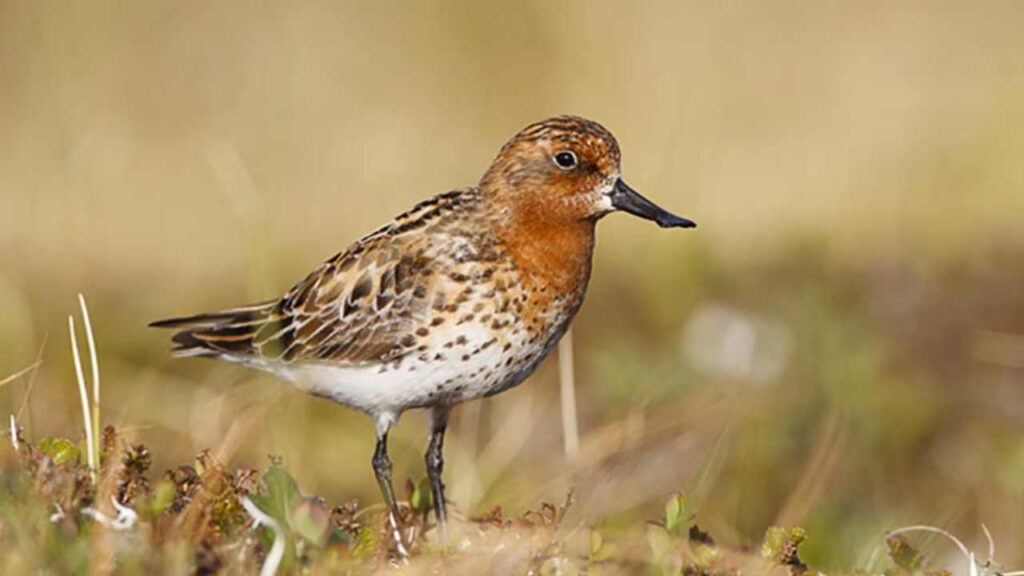
Sociable Lapwing

Siberian Crane
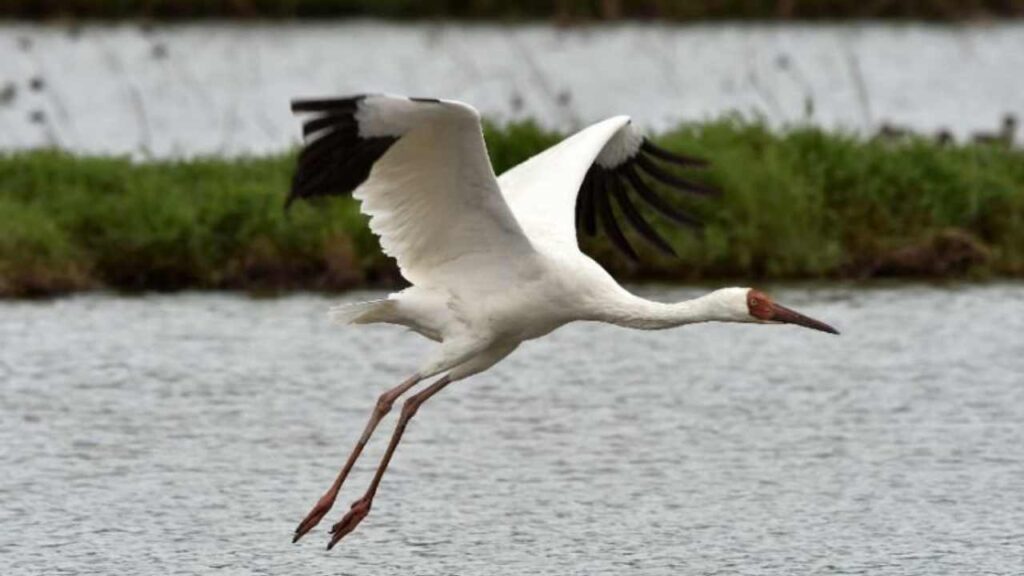
Forest Owlet

Edgew’s Bushchat

Bengal Florican

Masked Finfoot
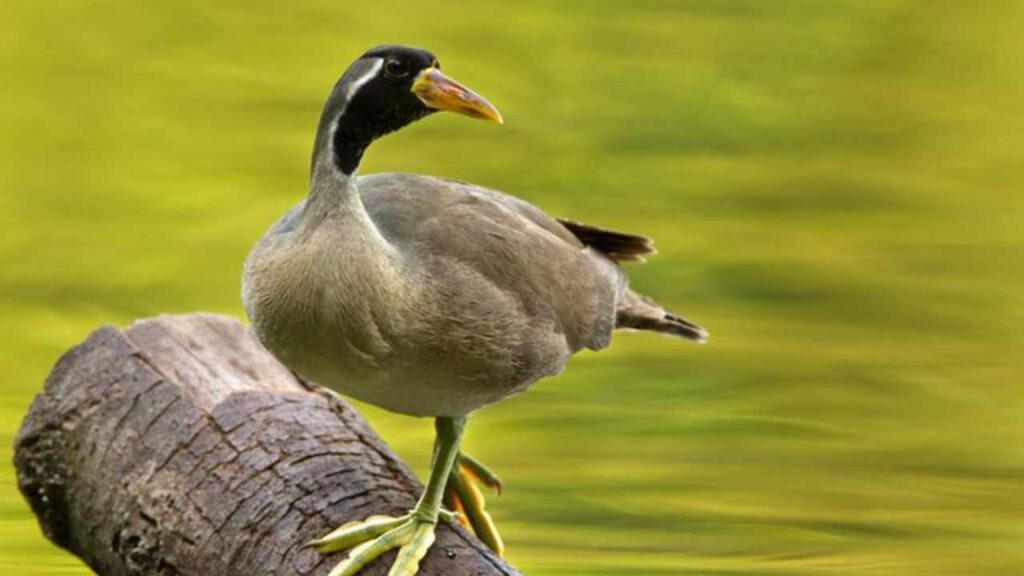
These birds show how endangered India’s birds are. We need strong efforts to save them. By learning about their problems, we can make plans to protect them. This way, they can keep flying over India for years to come.
“The fate of these endangered birds is inextricably linked to the well-being of our entire ecosystem. Their survival is a testament to our commitment to preserving the natural heritage of our nation.”
The Critically Endangered Great Indian Bustard
The Great Indian Bustard is a symbol of India’s bird diversity. Once common in the Deccan plateau’s dry lands, it’s now on the edge of extinction. Its numbers have greatly decreased.
Habitat Loss and Hunting: Threats Facing This Majestic Bird
Habitat loss and hunting are big threats to the Great Indian Bustard. Agriculture and human settlements have taken over its home. This has left the bird with little space to live.
Hunters and poachers also target these birds for their meat and supposed medicine benefits. This, along with habitat loss, has made them very rare. There are only a few hundred left in India.
Conservation groups and government efforts are trying to help. But, the Great Indian Bustard’s future is still unsure. Saving their homes and stopping poaching is key to their survival.
We need to work together to save the Great Indian Bustard and other birds losing their homes. A strong conservation plan is needed. This way, we can help this bird and keep India’s bird diversity alive for the future.
The Diminishing Numbers of the Indian Vulture
The Indian Vulture was once common in the Indian subcontinent. Now, its numbers have sadly decreased a lot. This decline affects the whole ecosystem because these birds are key to keeping nature in balance.
The main reason for this drop is the veterinary drug diclofenac. This drug, given to livestock, is toxic to vultures. It has caused many deaths. Even with bans, diclofenac is still a big problem for vultures.
Another issue is losing their homes. As humans build more and cities grow, vultures’ living spaces shrink. This makes it hard for them to live and have babies, making the situation worse.
People know how important the Indian Vulture is for nature. So, efforts to save it have started. These include stopping the use of diclofenac, creating safe areas, and reintroducing them into the wild. But, saving this bird is a big challenge that needs a lot of work from everyone.
“The decline of the Indian Vulture is a dire warning of the fragility of our natural systems and the urgent need for comprehensive wildlife preservation efforts in India.”
We need to act fast to save India’s birds, especially the Indian Vulture. This bird’s story shows us how important it is to have strong plans to protect wildlife. By working together and caring for India’s wildlife, we can help the Indian Vulture return to the sky.
Preserving the Rare Avian Biodiversity of the Himalayas
The Himalayas in India are a special place for rare and endangered birds. These birds can’t be found anywhere else. They face threats like losing their homes, climate change, and people moving in. We need to act to protect these birds.
Endangered Species of the Himalayan Region
The Himalayas have many endangered birds, each important to the ecosystem. Birds like the Himalayan Quail, Cheer Pheasant, and Tibetan Snowcock are in danger. Their homes are being destroyed, putting their future at risk.
- Himalayan Quail: A critically endangered quail species found only in the Western Ghats of India.
- Cheer Pheasant: A vulnerable pheasant species native to the Himalayas, threatened by habitat loss and hunting.
- Tibetan Snowcock: A high-altitude partridge species found in the Tibetan Plateau and Himalayan regions, facing risks from climate change and human disturbance.
Keeping the avian biodiversity of the Himalayas safe is crucial for India’s wildlife preservation. By protecting these Himalayan region endangered species, we help keep the mountains healthy and strong.
“The Himalayas are a biodiversity hotspot, home to countless species found nowhere else on Earth. Protecting this fragile ecosystem is not just an ecological necessity, but a moral imperative for us all.”
Migratory Bird Endangerment: Conserving Vital Flyways
India is home to many birds that travel long distances each year. These birds use important flyways and places to rest during their trips. But, they face big challenges that could end their journeys. Things like losing their homes, being hunted, and changes to their paths are big threats.
Exploring the Challenges Faced by Migratory Avian Species
One big problem is losing their homes along the way. Avian habitat loss happens because of cities growing, more farms, and new buildings. This messes up the birds’ travel plans. Also, some birds are hunted or sold illegally, which makes things worse for them.
Another issue is barriers on their usual paths. Things like dams, power lines, and wind turbines can push birds off course. This makes them use more energy, get lost, and die.
To help, people in India are working on saving the places these birds need. They’re making safe areas, using land wisely, and working with other countries. This will help these amazing birds keep flying for years to come.
By working together, India can save its migratory birds and their homes. This way, these birds can keep playing a big part in India’s nature.
The Indian Ornithological Red List: A Call to Action
The Indian Ornithological Red List is a key tool for saving endangered bird species in India. It highlights the urgent need to protect indian ornithological red list and critically endangered bird species. These birds are in danger and need our help.
This list shows the conservation status of India’s birds, from “Least Concern” to “Critically Endangered.” Sadly, many birds are close to disappearing. Their numbers are dropping fast because of habitat loss, poaching, and harming the environment.
- The Red List includes iconic birds like the Great Indian Bustard, the Indian Vulture, and the Bengal Florican, all Critically Endangered.
- These birds are at high risk of vanishing. We must act quickly to save them.
The Indian Ornithological Red List is a call to action. It urges us to protect endangered birds and their homes. It’s a call for government agencies, conservation groups, and communities to work together. We need to create plans to save India’s bird diversity.
“The Indian Ornithological Red List is not just a list. It’s a guide for action. It shows us how to keep our skies full of life and song.”
Listening to the Red List’s warnings can help save India’s endangered birds. It’s our chance to give them a future. We must act now for these birds and for our environment.
Combating Habitat Loss and Fragmentation
Habitat loss and fragmentation are big threats to birds in India. Urban growth, farming, and new infrastructure take over natural areas. Conservationists are fighting back with strategies to save the homes of endangered birds.
Strategies for Preserving Avian Habitats and Ecosystems
Creating protected areas like national parks and wildlife sanctuaries is key. These places keep endangered birds safe and help the environment stay balanced.
Restoring and rehabilitating habitats is also vital. By planting native plants and fixing damaged areas, we can give birds new places to live and find food. This reduces the effects of avian habitat loss and helps birds survive.
Good planning for land use is important too. By managing development and adding conservation plans, we can balance human needs with protecting India wildlife preservation.
Getting local communities involved is essential. When people help protect and restore bird habitats, they feel connected and responsible. This makes conservation efforts last longer.
Conservationists in India are working hard to save birds from habitat loss and fragmentation. They’re using a detailed and team effort to protect the country’s bird diversity for the future.
Community-Based Conservation Initiatives
Successful indian bird conservation efforts in India need local communities to step up and support. At the core of india wildlife preservation are programs that empower locals to protect their natural resources. These programs help locals feel a sense of ownership in saving the country’s bird diversity.
In the rugged Himalayas, local groups and wildlife organizations have teamed up. They’ve started grassroots efforts to protect endangered birds like the Himalayan Griffon Vulture and the Cheer Pheasant. By getting locals involved in monitoring and protecting their habitats, these efforts have boosted bird protection. They’ve also made locals appreciate the importance of these birds.
In Rajasthan’s dry lands, community efforts have been key to saving the Great Indian Bustard. Local herders and conservation groups work together. They use sustainable grazing, protect areas, and spread the word about the bustard’s struggle. Thanks to this teamwork, bustard numbers are slowly getting better in some areas.
These community-focused projects show how vital it is to involve locals in indian bird conservation. By making them feel like they own the conservation, these projects protect endangered birds. They also help the communities socially and economically.
“When local communities are engaged as partners in conservation, the results are truly remarkable. They become the greatest champions of the species and habitats they depend on.”
As india wildlife preservation remains a big issue, these community-led conservation plans look promising. They show how important local involvement is in protecting India’s bird species.
Conclusion
We’ve looked into the struggles of India’s top 10 endangered birds. It’s clear we need quick action to protect these amazing birds and their homes. The fast decline of these bird species shows we must work together to save them.
These birds face many dangers, like losing their homes, being hunted, and conflicts with humans. We want to make people aware of these issues. We hope this will motivate those in charge, conservation groups, and the public to help protect India’s unique birds.
Some efforts, like the breeding programs for the Great Indian Bustard, have shown success. But, there’s still a lot to do. If we join forces to address the main issues, we can help these endangered birds and others in India thrive. Protecting India’s top 10 endangered birds, Indian bird conservation, and India wildlife preservation is a duty we all share. It’s about taking care of our incredible natural world.
FAQ
What are the top 10 endangered birds in India?
The top 10 endangered birds in India include the Great Indian Bustard, Indian Vulture, and Himalayan Quail. These birds face threats like habitat loss, hunting, and human activities. This leads to a worrying decline in their numbers.
Why are these bird species endangered in India?
These birds are endangered due to habitat loss and fragmentation, hunting, pollution, and human activities. Climate change and certain veterinary drugs also harm some species, like the Indian Vulture.
What is being done to conserve these endangered bird species in India?
Conservation efforts include setting up protected areas and restoring habitats. Local communities are also involved in conservation. The Indian Ornithological Red List guides conservation actions and priorities.
How can individuals and communities contribute to the conservation of endangered birds in India?
People can help by supporting conservation groups, joining citizen science projects, and pushing for better laws. Raising awareness and getting local communities involved is key to saving India’s birds.
What are the unique challenges faced by endangered bird species in the Himalayan region?
The Himalayas are home to many rare birds. They face challenges like habitat loss, human encroachment, and disrupted migration routes. Protecting these birds requires focused efforts to save their habitats.
How important are migratory bird species to India’s avian conservation efforts?
Migratory birds are vital for conservation in India. They use important flyways and stopover sites. However, these are threatened by habitat loss and hunting. Protecting them requires international cooperation.
What is the role of the Indian Ornithological Red List in guiding bird conservation strategies?
The Indian Ornithological Red List helps guide conservation efforts by assessing bird species’ threats. It lists endangered birds, helping focus conservation strategies and resource allocation.
How can community-based conservation initiatives contribute to the protection of endangered birds in India?
Community-based conservation is key to protecting endangered birds. It involves local people in conservation, creating a sense of ownership. This approach leads to more effective conservation outcomes.


